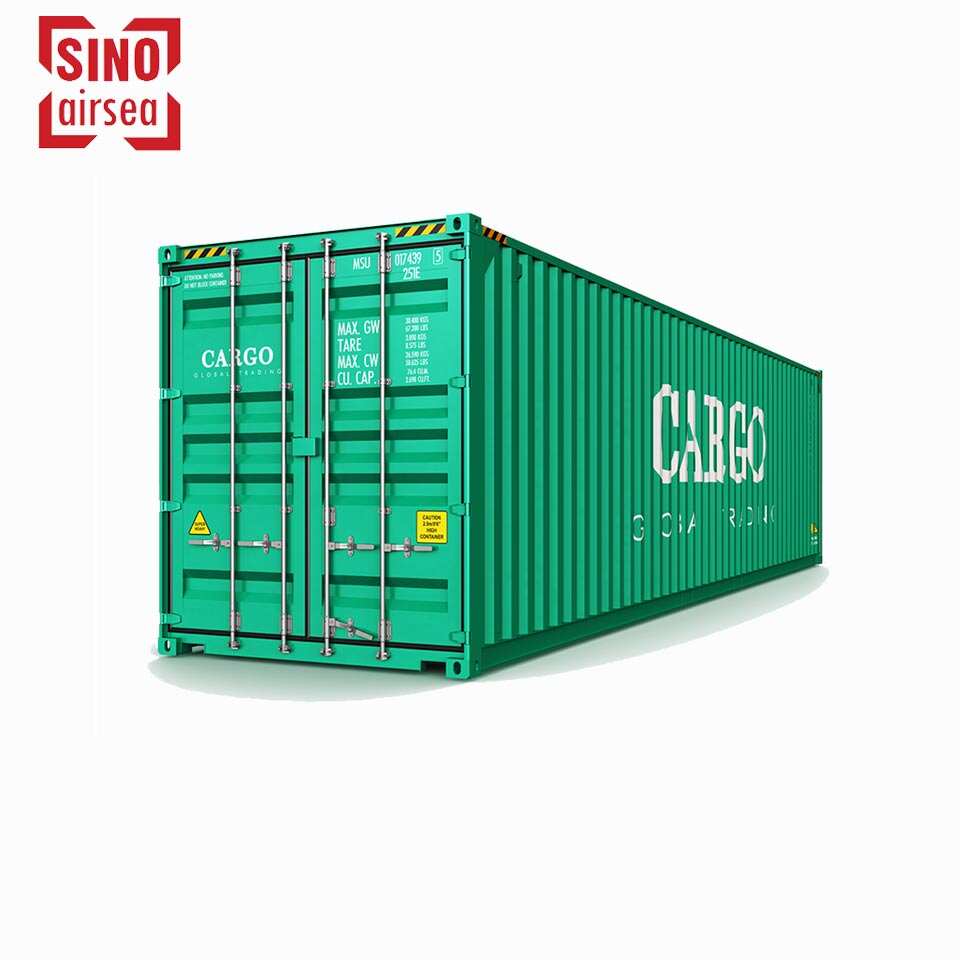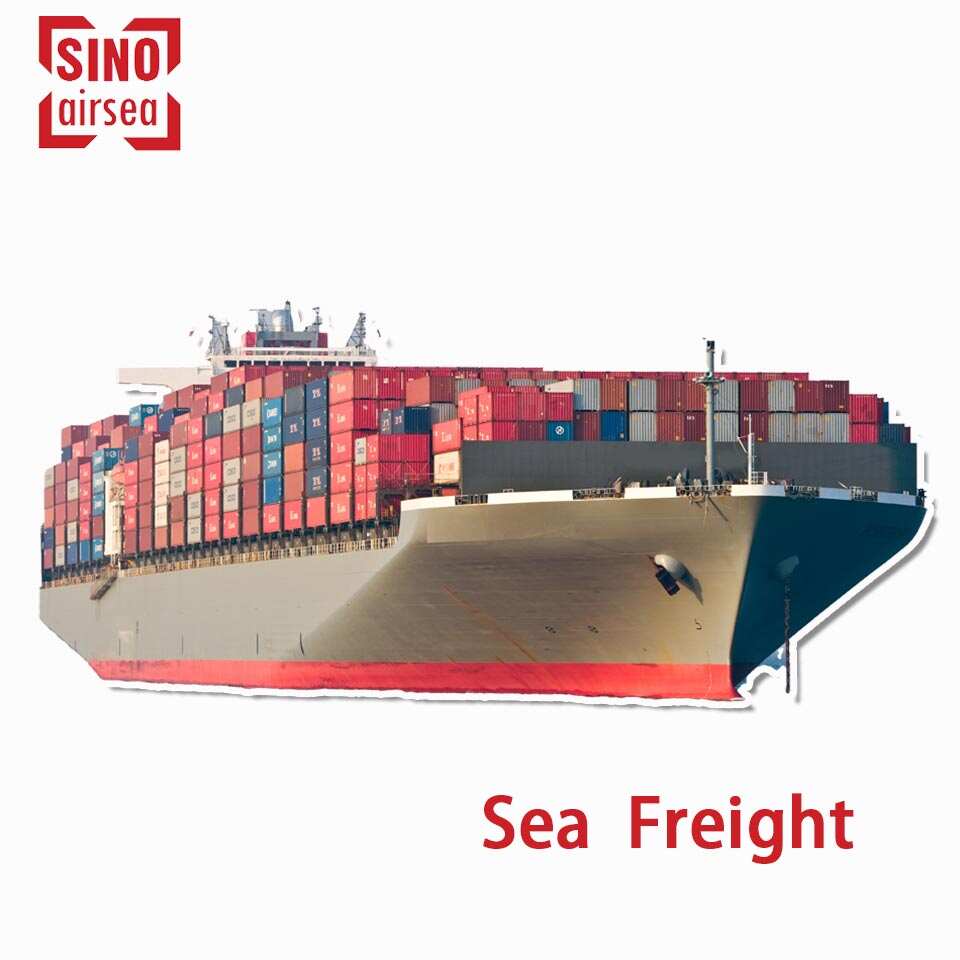Sea Freight Services: Navigating Global Trade with Efficiency and Technology
In today's interconnected world, sea freight services play a crucial role in facilitating international trade. From transporting vast quantities of goods across oceans to ensuring perishable items reach their destinations in optimal condition, sea freight services encompass a diverse range of offerings tailored to meet various logistical needs. This article explores the types of sea freight services available, the detailed process involved in sea freight shipping, and the transformative impact of technological advancements in this industry.
I. Types of Sea Freight Services
A. Introduction to Sea Freight Services
Sea freight services involve the transportation of cargo via ships, offering businesses a cost-effective and reliable option for moving goods across continents. This method is particularly advantageous for bulk shipments and oversized items that are impractical or expensive to transport by air.
B. Full Container Load (FCL)
Full Container Load, commonly referred to as FCL, is a service where an entire shipping container is exclusively dedicated to one shipper's cargo. This means the container is sealed at the point of origin and opened only at the destination, minimizing handling and reducing the risk of damage or loss. FCL is favored by industries requiring high-volume shipments or those needing to transport goods that must remain intact and secure throughout the journey.
1. Definition and Characteristics of FCL
FCL shipments typically involve standard containers of 20 feet (TEU) or 40 feet (FEU) in length, though specialized containers like high cube containers are also available for accommodating goods with varying dimensions.
2. Advantages of FCL Shipping
Businesses opting for FCL benefit from lower per-unit shipping costs compared to other methods like Less than Container Load (LCL). Moreover, FCL shipments are generally faster as they are not delayed by the consolidation of multiple shippers' cargo at various points.
3. Examples of Industries Benefiting from FCL
Industries such as automotive, electronics, and heavy machinery rely heavily on FCL for transporting large quantities of manufactured goods and components across global supply chains.
C. Less than Container Load (LCL)
Less than Container Load, or LCL, is a sea freight service that consolidates multiple shippers' cargo into a single container. This method allows small to medium-sized businesses to access cost-effective sea freight options without needing to fill an entire container themselves.
1. Definition and Characteristics of LCL
In LCL shipments, goods from different shippers are grouped together based on destination and shipped in a shared container. This approach optimizes container space and enables businesses with lower shipping volumes to benefit from sea freight's economies of scale.
2. Advantages of LCL Shipping
LCL is advantageous for businesses with smaller inventory needs or those shipping goods that do not require the exclusive use of a container. It offers flexibility in managing inventory levels and reduces the overall logistics costs associated with smaller shipments.
3. Examples of Industries Benefiting from LCL
Retailers of consumer goods, small manufacturers, and startups often utilize LCL services to import or export goods economically while maintaining inventory control and meeting customer demand.
D. Specialized Services: Refrigerated Containers (Reefers)
Refrigerated containers, commonly known as reefers, are specialized sea freight services designed to transport perishable goods that require temperature-controlled environments. These containers are equipped with refrigeration units to maintain specific temperature ranges throughout the journey, ensuring the freshness and quality of sensitive cargo such as fresh produce, pharmaceuticals, and chemicals.
1. Importance of Reefers in Sea Freight
The ability to control temperature and humidity levels is critical for preserving the integrity of perishable goods during long-distance transportation by sea. Reefers provide a reliable solution for industries where maintaining product quality is paramount.
2. Types of Perishable Goods Shipped via Reefers
Reefers accommodate a wide range of perishable items, including fruits, vegetables, dairy products, meats, vaccines, and other temperature-sensitive pharmaceuticals. These goods often require strict adherence to temperature and humidity conditions to prevent spoilage and maintain safety standards.
3. Technological Innovations in Reefer Containers
Recent advancements in reefer technology include sophisticated monitoring systems that enable real-time tracking of temperature, humidity, and other environmental conditions. These innovations enhance cargo visibility and provide early warnings of any deviations from optimal storage conditions, thereby reducing the risk of spoilage and ensuring regulatory compliance.
II. Process of Sea Freight Shipping
A. Booking Cargo
The process of sea freight shipping begins with cargo booking, where businesses or their appointed freight forwarders reserve space on a vessel for transporting goods to their destination port.
1. Methods of Booking
Cargo can be booked directly through shipping lines or indirectly via freight forwarders who manage logistics on behalf of shippers. Freight forwarders offer expertise in navigating complex shipping regulations and negotiating competitive rates with multiple carriers.
2. Documentation Required for Booking
Essential documents for booking cargo include a commercial invoice detailing the goods being shipped, packing lists, and a bill of lading issued by the carrier as a receipt of goods. Accurate documentation is crucial for customs clearance and compliance with international trade regulations.
B. Preparation of Cargo
Before shipment, goods must be properly prepared and packaged to withstand the rigors of sea transportation. Packaging materials should be robust enough to protect contents from moisture, vibration, and handling during loading and unloading processes.
1. Packaging Requirements
Packaging requirements vary depending on the nature of the goods being shipped. For example, fragile items may require cushioning materials such as foam or bubble wrap, while hazardous materials must comply with specific packaging standards outlined by international transport regulations.
2. Labeling and Marking
Each package or container should be clearly labeled with shipping information, including the shipper's and consignee's details, port of discharge, and handling instructions. Proper labeling facilitates efficient cargo handling and ensures accurate delivery to the intended destination.
C. Transportation to Port
Once packaged and labeled, cargo is transported to the designated port of departure. Inland transportation options include trucking, rail, or a combination of both, depending on the proximity of the manufacturing facility or warehouse to the port.
1. Inland Transportation Options
The choice of transportation mode is influenced by factors such as cost, transit time, and the volume of goods being shipped. Trucking offers flexibility and door-to-port service, while rail transport is preferred for long-distance haulage and bulk shipments.
2. Container Stuffing and Securing
Cargo is loaded into shipping containers at designated container freight stations (CFS) or warehouses near the port. Proper stuffing and securing of containers ensure goods are tightly packed to prevent shifting during transit, minimizing the risk of damage and maximizing container space utilization.
D. At the Port
Upon arrival at the port of departure, cargo undergoes inspection and documentation verification by port authorities and customs officials. This stage involves rigorous checks to ensure compliance with import/export regulations and the accuracy of shipping documentation.
1. Cargo Inspection and Documentation
Port authorities inspect cargo to verify its contents, quantity, and adherence to safety and security standards. Documentation checks include confirming the accuracy of commercial invoices, packing lists, and other required paperwork essential for customs clearance.
2. Customs Clearance Process
Customs clearance involves submitting import/export declarations and paying applicable duties and taxes to obtain clearance for the shipment to leave the country or enter the destination country legally. Customs brokers or freight forwarders assist in navigating complex customs procedures and ensuring compliance with regulatory requirements.
E. Sea Voyage
Once customs clearance is obtained, cargo is loaded onto the vessel for transportation across the ocean to the destination port. During the sea voyage, containers are securely stowed on board and monitored to ensure they remain intact and undisturbed throughout the journey.
1. Tracking and Monitoring Systems
Advanced tracking and monitoring systems enable real-time visibility of container locations, temperature conditions (in the case of reefers), and estimated time of arrival (ETA) at the destination port. These systems enhance supply chain transparency and enable proactive management of shipment delays or disruptions.
2. Challenges During Sea Voyage
Challenges such as adverse weather conditions, piracy threats in certain maritime regions, and port congestion may impact the scheduled arrival times and overall efficiency of sea freight operations. However, proactive planning and contingency measures help mitigate these risks and ensure timely delivery of goods.
F. Arrival at Destination Port
Upon arrival at the destination port, containers are unloaded from the vessel and transferred to the port's container terminal for deconsolidation and customs clearance procedures in the destination country.
1. Unloading and Deconsolidation of Cargo
Port workers unload containers from the vessel using specialized equipment such as cranes and transport them to designated areas for inspection and deconsolidation. LCL shipments undergo a process where containers are unpacked, and individual shipments are sorted for delivery to respective consignees.
2. Inland Transportation to Final Destination
After customs clearance is obtained, cargo is transported from the port to its final destination via trucking or rail. Inland transportation networks play a crucial role in facilitating the last-mile delivery of goods to warehouses, distribution centers, or directly to end customers.
III. Technological Advancements in Sea Freight
A. Introduction to Technological Advancements
Technology is reshaping the landscape of sea freight services, introducing innovations that enhance efficiency, visibility, and sustainability across the supply chain. From digital tracking systems to predictive analytics, these advancements empower businesses to optimize operations and meet evolving customer expectations.
B. Digital Tracking Systems
Digital tracking systems enable real-time monitoring of cargo throughout its journey, providing stakeholders with accurate location data and status updates. GPS-enabled tracking devices installed on containers transmit information to centralized platforms accessible to shippers, consignees, and logistics providers.
1. Importance and Benefits of Tracking Systems
Tracking systems improve supply chain visibility by tracking container movements,monitoring temperature conditions (in the case of reefers), and recording critical events such as container openings or delays. This real-time data allows stakeholders to proactively manage logistics operations, optimize routing decisions, and respond swiftly to any disruptions that may arise during transit.
2. Examples of Tracking Technologies Used
Leading shipping companies and logistics providers utilize sophisticated tracking technologies such as RFID (Radio Frequency Identification), IoT (Internet of Things) sensors, and cloud-based platforms. These technologies enable comprehensive monitoring of cargo movements across global supply chains, ensuring transparency and accountability throughout the shipping process.
C. Container Management Software
Container management software plays a pivotal role in streamlining sea freight operations by digitizing and automating key processes related to container logistics and inventory management.
1. Functions and Features of Management Software
Container management software facilitates efficient container tracking, allocation, and utilization across multiple shipping routes and ports. It integrates with ERP (Enterprise Resource Planning) systems to synchronize inventory levels, manage container returns, and optimize vessel loading configurations for maximum efficiency.
2. Integration with Supply Chain Management
Integration of container management software with broader supply chain management systems enhances visibility and collaboration among stakeholders. Real-time data exchange enables proactive decision-making, improves inventory accuracy, and reduces operational costs associated with container fleet management.
D. Predictive Analytics for Supply Chain Optimization
Predictive analytics leverages historical data and machine learning algorithms to forecast demand patterns, anticipate supply chain disruptions, and optimize resource allocation in sea freight operations.
1. Use of Analytics in Sea Freight Operations
Analytics-driven insights enable shippers to forecast shipping volumes, optimize route planning, and allocate resources based on predictive demand patterns. By analyzing historical shipment data and external factors like weather patterns or geopolitical events, businesses can mitigate risks and capitalize on opportunities for cost savings and operational efficiencies.
2. Case Studies or Examples of Analytics Implementation
Leading maritime logistics providers use predictive analytics to enhance decision-making and operational efficiency. For example, predictive models may recommend alternative shipping routes to avoid congestion, optimize container utilization to reduce empty returns, or predict maintenance needs for fleet vessels based on historical performance data.
Conclusion
Sea freight services continue to evolve in response to global trade dynamics and technological advancements that enhance efficiency, visibility, and sustainability across supply chains. From the versatility of Full Container Load (FCL) and cost-effective consolidation options of Less than Container Load (LCL) to the critical role of specialized services like refrigerated containers (reefers) for perishable goods, sea freight offers businesses a reliable and scalable solution for transporting goods across continents.
The process of sea freight shipping involves meticulous planning, from booking cargo and preparing goods for shipment to navigating customs clearance and managing inland transportation. Advanced tracking systems, container management software, and predictive analytics are revolutionizing sea freight operations by providing real-time visibility, optimizing resource allocation, and enhancing decision-making capabilities for stakeholders.
As technological innovations continue to reshape the sea freight industry, businesses can leverage these advancements to streamline operations, improve supply chain resilience, and meet the growing demands of global markets. By embracing digital transformation and adopting data-driven strategies, stakeholders in the sea freight sector are poised to achieve greater efficiency, sustainability, and customer satisfaction in an increasingly interconnected world.
In conclusion, sea freight services not only facilitate the movement of goods across borders but also serve as a cornerstone of global commerce, supporting economic growth and fostering international trade relationships. Embracing innovation and leveraging technological advancements will be key to navigating future challenges and unlocking new opportunities in the dynamic landscape of sea freight logistics.



